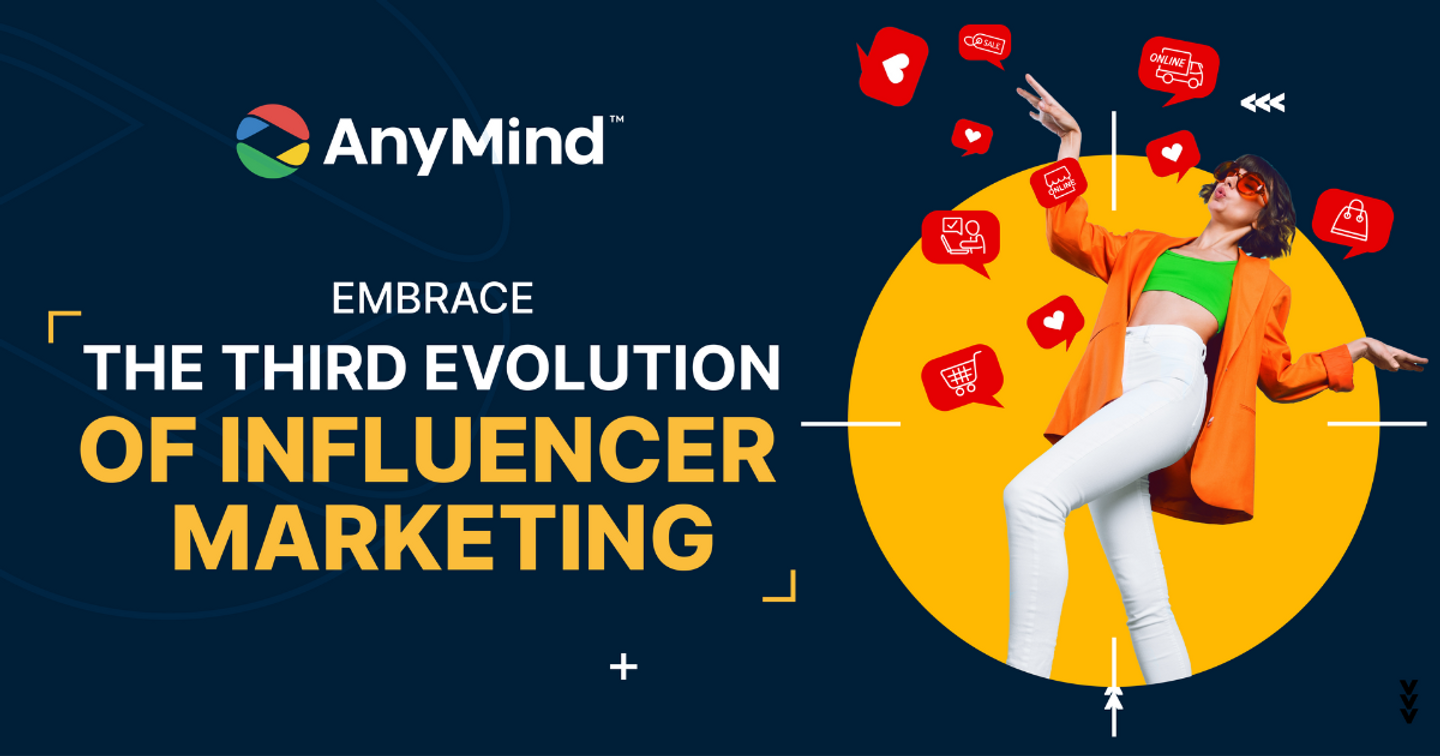Sharing from Nguyen Thi Ha My, Country Manager of AnyMind Group, Vietnam
Influencer marketing has undergone various stages of evolution. In the initial phase, brands recognized the potential of collaborating with celebrities to enhance brand visibility. During this stage, marketers aimed to reach the widest volume of audiences. However, influencer marketing still faced several challenges. One of these challenges was the ability to directly attribute influencer marketing spend and activity to business results. Additionally, the expansion of platforms and channels where influencers and creators could grow and engage their followers has made the influencer marketing landscape more complex.
Moving into the second evolution, the rise of micro-influencers (influencers with followers ranging from 10,000 to 100,000) along with KOLs (Key Opinion Leaders) and KOCs (Key Opinion Consumers) marked a period of greater authenticity and trackability in influencer marketing.
Technology in this period was successful in addressing some of the issues of the first evolution. Marketers can access extensive data to select suitable influencers, optimize campaign activities, and track influencer performance. Models like CPE (Cost per Engagement), CPC (Cost per Click), and CPB (Cost per Buzz) are used to measure the impacts of influencers.
The third evolution of influencer marketing
We are entering the third evolution of influencer marketing. This is a phase where influencer marketing converges with digital commerce and is highly attributable to business results. A phase where we will see the rise of eSOLs.
Social media platforms have introduced shoppable elements onto their platforms. The COVID-19 pandemic and social distancing measures have transformed consumer behaviors in the Asia-Pacific region and globally. E-commerce is booming, and consumers are getting accustomed to the convenience of online shopping. Livestream shopping is also becoming popular in the Asia-Pacific region, driven by conversational commerce platforms like Facebook Messenger, Zalo, and online payment options.
The third evolution of influencer marketing emerges the trend of "deinfluencing" - influencers discourage their followers from buying low-quality or ineffective products. Influencers in the third evolution prioritize cultivating strong connections with customers and generating valuable content for end users, thereby bringing sustainable business impacts to brands.
Many technology companies in the influencer marketing industry have introduced platforms that enable brands to leverage influencers throughout every stage of the marketing funnel, including conversion and purchases. Among these, AnyMind Group's AnyTag platform stands out, connecting with over 500,000 influencers in Vietnam and Asia. This platform suggests suitable influencers based on brand requirements and provides in-depth analyses of influencer campaign conversion rates.
The rise of eSOLs
The key to this third evolution is eSOLs (e-Selling Opinion Leaders) - a term introduced by AnyMind Group. eSOLs refer to individuals or entities with an online identity who can sell or introduce products/services to end consumers through online platforms. eSOLs are not limited to one platform; they can drive sales across various channels, including brand websites, e-commerce platforms, social media, messaging apps, and more.
So, how do eSOLs differ from KOLs and KOCs? eSOLs can collaborate with brands through revenue-sharing models, commissions, or as retailers for the brand. eSOLs possess a deep understanding of the brand's products and can convince their followers to make purchases.
This means that eSOLs can leverage their content and influence to generate interest, attention, conversion, and customer loyalty for brands.
Impacts on marketers and influencers
The third evolution opens doors to a new collaboration model that can result in even greater earnings for the influencer. It is definitely a new challenge, but one that, if the influencer is able to grasp quickly and choose the right platform and content strategies, can give them a head start into the future of influencer marketing.
For marketers, tracking the effectiveness of influencer marketing campaigns becomes easier, more convenient, and more efficient. Marketers can gain comprehensive insights into influencer's impact on driving sales and make informed decisions for future influencer selections.
Furthermore, marketers can delegate greater responsibility to eSOLs for product sales, minimizing the risks associated with influencer marketing. It will be difficult for fraud to occur, as results come in the form of actual sales generated.
By leveraging AnyTag, marketers can track conversions through a variety of ways - from implementing tracking codes to their brand.com store and coupons to integrations with e-commerce marketplaces such as Shopee and Lazada.
To optimize the effectiveness of eSOLs, brands need to choose the right influencers, content, and strategies. AnyMind Group, with its extensive experience in influencer marketing, offers comprehensive eSOLs solutions - from selecting suitable influencers to planning content strategies that attract end-users and enhance conversion rates.
What’s next?
Digital commerce and influencer marketing have become inevitable trends, and eSOLs will play a crucial role in shaping how consumers shop online. eSOLs is the first wave of the third evolution of influencer marketing, but it also opens up a new range of possibilities for both marketers and influencers. The question remains: are brands ready to embrace this trend with eSOLs?























